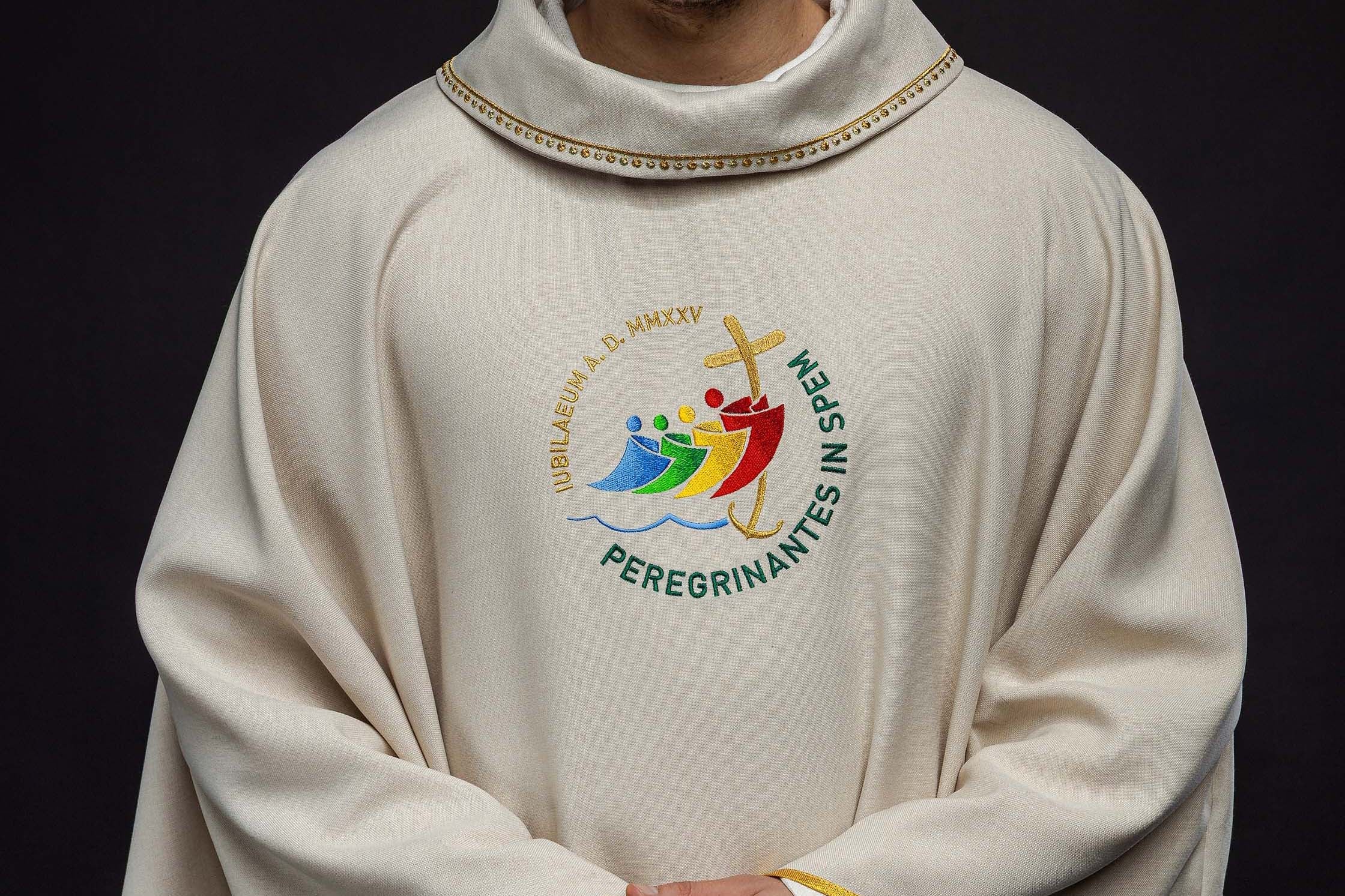
How to Organize Online Broadcasts of Holy Mass: A Guide for Parishes
How to Organize Online Broadcasts of Holy Mass? A Comprehensive Step-by-Step Guide
In the age of digitalization, more and more parishes are deciding to provide online broadcasts of Holy Mass to enable participation for the sick, elderly, those abroad, or simply those unable to reach the church. However, organizing such an undertaking requires proper preparation and understanding of several key elements. This article will guide you through the entire process, from basic decisions to advanced techniques.
1. Why is it worth broadcasting Holy Masses online?
Online broadcasts open the church to the world and allow reaching the faithful who, for various reasons, cannot participate in Mass in person. It is a tool that builds community, maintains ties with the parish, and provides a sense of participation in the life of the Church, even from a distance. An added value is also the possibility of archiving services, which allows the faithful to replay them at a convenient time.
Why should a parish broadcast Masses online?
Broadcasting Holy Masses online is an expression of concern for all the faithful, especially those excluded from physical participation due to health reasons or distance. It allows maintaining community, enables regular contact with parish life, and gives a sense of being part of a larger whole.
What are the benefits of broadcasting services?
The main benefits are: increasing the availability of services for all the faithful, building a stronger bond with the parish community, reaching new audiences (e.g., the faithful abroad), the possibility of archiving and replaying services, as well as promoting the parish in the digital space.
Are online broadcasts in accordance with Church teaching?
The Catholic Church has repeatedly emphasized the importance of media in evangelization. Online broadcasts are seen as a tool that can serve the spiritual good of the faithful, helping them live their faith, especially in situations where physical participation in services is impossible. However, it is crucial that the recipient understands that the broadcast does not fully replace sacramental participation in the liturgy.
What are the challenges associated with organizing online broadcasts?
The main challenges are: the need to invest in equipment and software, ensuring a stable internet connection, acquiring appropriate technical knowledge by those responsible for the broadcast, and taking care of image and sound quality so that the transmission is dignified and professional.
2. Choosing the right equipment for broadcasting
The quality of the broadcast largely depends on the equipment used. You don't have to invest in a professional studio right away, but it's worth opting for equipment that will provide good image and sound quality.
What type of camera will be best for broadcasting Holy Mass?
For beginners, a good quality webcam connected to a computer may be a good solution. If the budget allows, it's worth considering sports cameras (e.g., GoPro) with streaming function, which offer a wide viewing angle and good image stabilization. For more advanced solutions, PTZ (Pan-Tilt-Zoom) cameras are recommended, which can be remotely controlled, changing the frame and zooming in on the image.
What microphones will provide the best sound quality?
Sound is absolutely crucial. Instead of relying on built-in microphones of cameras or computers, it's worth investing in external microphones. Wireless microphones (e.g., lavalier, so-called "clips" attached to clothing) are a good choice, which will ensure clean sound of the priest, regardless of his movement. You can also consider directional or condenser microphones placed in strategic locations in the presbytery.
What computer will be needed for broadcasting?
A computer with a sufficiently powerful processor and graphics card is needed for smooth transmission, capable of processing video and audio signals in real time. It is also important to have enough RAM. The computer should be equipped with appropriate connectors (USB, HDMI) for connecting cameras and microphones.
Is dedicated streaming software needed?
Yes, dedicated software makes it easier to manage the transmission. Popular and free programs include OBS Studio (Open Broadcaster Software) and Streamlabs OBS. They allow you to select image and sound sources, add graphics (e.g., the parish logo, subtitles), switch between shots from different cameras, and broadcast directly to streaming platforms.
How to ensure a stable internet connection?
A stable and fast internet connection is the foundation of a successful broadcast. It is recommended to use a wired connection (Ethernet) instead of Wi-Fi, because it is much more stable. Before starting the transmission, it is worth performing an internet speed test (upload speed) to make sure it is high enough for smooth broadcasting in the selected resolution.
3. Choosing a platform for broadcasting
There are many platforms that allow online broadcasting. The choice depends on preferences, budget and target audience.
Facebook Live
A free and widely available platform, ideal for reaching the local community. Live broadcasts appear in the News Feed of followers, which increases their visibility. The disadvantage may be the lack of advanced personalization options and potential disruptions related to Facebook algorithms.
YouTube Live
A very popular platform, enabling reaching a wide audience. It provides good image and sound quality and the ability to create thematic channels. Transmissions can be easily shared and archived.
Other streaming platforms
There are also platforms dedicated to live broadcasts, such as Twitch (often associated with games, but increasingly used more widely), Vimeo (offering professional tools and higher quality) or platforms specializing in church broadcasts (e.g., LiveMass.org, Vatican News for broadcasts from the Vatican).
How to choose a platform tailored to the needs of the parish?
Consider where your audience is. If most parishioners actively use Facebook, it's a good starting point. If the goal is to reach a wider audience or provide a professional impression, YouTube may be a better choice. It is also worth considering integration possibilities with other tools and costs.
4. Technical and logistical preparation
The success of the transmission depends on careful preparation of all elements.
How to place the camera and microphones in the church?
The camera should be placed in a place providing a good view of the altar and the presbytery. Places at the back of the nave or on the choir are often chosen. Microphones should be discreetly placed to pick up sound from the altar and the pulpit, while minimizing echoes and sounds from the environment. It is worth testing different settings before starting the transmission.
How to configure streaming software?
In the case of OBS Studio or Streamlabs OBS, you need to add your video (cameras) and audio (microphones) sources. Then you need to select the target platform (e.g., YouTube, Facebook) and enter the appropriate stream keys. It is also necessary to set transmission parameters, such as resolution (e.g., 1080p) and bitrate (data transfer speed), adapted to the capabilities of the internet connection.
How to take care of lighting?
Good lighting is crucial for image quality. It is worth taking care of even lighting of the presbytery, avoiding sharp shadows and overexposure. Sometimes it is enough to use the existing lighting of the church, other times it may be necessary to add additional lamps.
What are the best practices during live broadcasts?
Before starting the transmission, it is worth conducting a general rehearsal to make sure that everything works correctly. During the transmission itself, care should be taken to ensure the smoothness of the transmission, avoid sudden camera movements and take care of the sound quality. It is also worth maintaining contact with viewers via chat, answering their questions and greeting them.
How to deal with technical problems during the transmission?
Even with the best preparation, problems may arise. It is important to have a plan B. For example, if the internet connection fails, you can try switching to a mobile connection or using another connection. It is worth having prepared contact information for technical support.
5. Promotion of Holy Mass broadcasts
To ensure that as many people as possible can benefit from the transmission, it should be properly promoted.
How to inform parishioners about the transmission?
Use all available parish communication channels: pastoral announcements, the parish website, social media profiles (Facebook, Instagram), the parish newsletter, as well as traditional posters in the church. Provide exact transmission times and links to the platform.
What content should be published before the transmission?
Before the transmission, it is worth publishing a post reminding about the upcoming event, encouraging sharing and informing about how to join the transmission. You can also publish a photo of the prepared presbytery or a short video announcing the service.
How to promote the transmission outside the parish?
If the goal is to reach a wider audience, it is worth using the possibility of sharing the transmission link on local groups in social media or cooperating with other parishes or religious organizations.
How to encourage viewers to interact during the transmission?
Encourage viewers to comment, ask questions in the chat and share the transmission. For example, you can ask for prayer intentions that will be read out. Viewers' activity increases engagement and a sense of community.
6. Legal and ethical aspects
When conducting the transmission, remember about several important issues.
What consents are needed to conduct a transmission in the church?
Usually, consent to broadcast Holy Mass is granted by the parish priest. You should also make sure that the music used is properly licensed or comes from free resources to avoid copyright infringement.
How to protect the privacy of liturgy participants?
Avoid showing the faces of the faithful in a way that would violate their privacy, unless they have explicit consent to their recording. Cameras should focus mainly on the presbytery and the celebrant.
How to properly archive and share recordings?
Transmission recordings can be shared on the parish's YouTube channel or Facebook. It is important to determine how long the recordings will be available and whether they will be trimmed or edited. Always remember the rules regarding the protection of personal data and copyright.
7. Summary and further steps
Organizing online broadcasts of Holy Mass is a challenge, but it brings enormous benefits in building and maintaining the parish community. The key to success is proper technical preparation, choosing the right platform and effective promotion. Remember that the goal is to provide spiritual support to the faithful and build bridges between the temple and the digital world.
If you are looking for high-quality liturgical materials that can be used during transmissions, such as elegant vestments, stoles or other accessories, we invite you to familiarize yourself with the offer of our online store haftinausa.com. We offer a wide selection of products made of the best materials, with beautiful embroideries that will certainly emphasize the solemnity of every Holy Mass.
```




